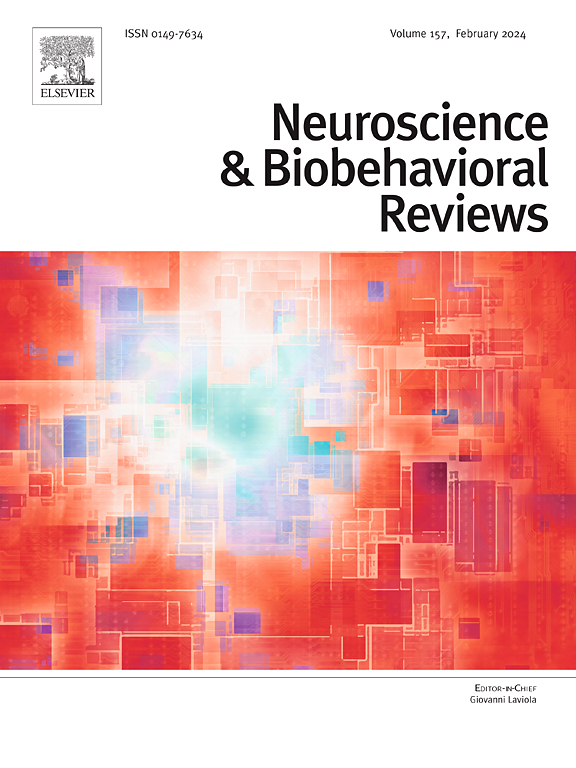神经精神疾病中感染危险生物体和免疫遗传易感性的扩展谱
IF 7.5
1区 医学
Q1 BEHAVIORAL SCIENCES
引用次数: 0
摘要
与精神病学特征相关的传染性危险生物体的范围正在扩大。传染因子可以调节生命不同阶段的精神疾病风险,如妊娠期、儿童期、青春期和成年期。产前感染似乎“启动”发育中的大脑,而在儿童时期或后期的感染可能起到“第二次打击”的作用,这些可能对患精神疾病的风险有协同作用。然而,并非所有先前感染的个体都发展为精神障碍,也不是传染性生物体单独导致精神表型。这表明有其他宿主因素的调节作用。宿主遗传背景至关重要地决定了对感染的不同易感性,并作为免疫激活和信号传导以及体内平衡脑功能的重要门户。尽管存在几个免疫检查点和效应器,但感染性有机体破坏了免疫激活和免疫补偿机制之间的平衡,并导致免疫失调。这在很大程度上取决于编码免疫分子的遗传位点,如toll样受体、主要组织相容性复合体、细胞因子/趋化因子及其受体、补体蛋白和其他分子和元件,如人类内源性逆转录病毒和肠道微生物组,它们在免疫调节和免疫效应功能中具有不同的作用。这些基因座内的遗传变异不仅影响对感染的不同易感性,而且还赋予精神疾病的风险。这篇文章强调了感染和免疫功能相关基因之间的关系及其对精神特征的影响的全面概述。了解这种相互作用将导致对感染和精神疾病易感性的遗传标记的识别。本文章由计算机程序翻译,如有差异,请以英文原文为准。
The expanding spectrum of infectious risk organisms and immunogenetic susceptibility in neuropsychiatric disorders
The spectrum of infectious risk organisms showing associations with psychiatric traits is expanding. Infectious agents can modulate the risk of psychiatric disorders at different stages of life, such as gestational, childhood, adolescent, and adult periods. Prenatal infection appears to ‘prime’ the developing brain, whereas infection during childhood or later periods may act as a ‘second hit’, and these may have synergistic effects on the risk of developing psychiatric diseases. However, neither all the individuals with antecedent infection develop psychiatric disorders, nor do infectious organisms alone lead to psychiatric phenotypes. This suggests modulatory effects of additional host factors. The host genetic background crucially determines differential susceptibility to infection and serves as an important gateway for immune activation and signalling, as well as homeostatic brain functions. Despite the presence of several immune checkpoints and effectors, the infectious organisms disrupt the balance between immune-activating and immune-compensatory mechanisms and contribute to immune dysregulation. This depends substantially on genetic loci encoding immune molecules such as Toll-like receptors, Major Histocompatibility Complex, cytokines/ chemokines and their receptors, complement proteins, and other molecules and elements such as human endogenous retroviruses and gut microbiome that have distinct roles in immune regulation and immune effector functions. Genetic variations within these loci not only influence differential susceptibility to infection but also confer risk to psychiatric disorders. This article highlights a comprehensive overview of the nexus between infections and immune function-related genes and their impact on psychiatric traits. Understanding such interactions will lead to the identification of genetic markers of susceptibility to infection and psychiatric diseases.
求助全文
通过发布文献求助,成功后即可免费获取论文全文。
去求助
来源期刊
CiteScore
14.20
自引率
3.70%
发文量
466
审稿时长
6 months
期刊介绍:
The official journal of the International Behavioral Neuroscience Society publishes original and significant review articles that explore the intersection between neuroscience and the study of psychological processes and behavior. The journal also welcomes articles that primarily focus on psychological processes and behavior, as long as they have relevance to one or more areas of neuroscience.

 求助内容:
求助内容: 应助结果提醒方式:
应助结果提醒方式:


